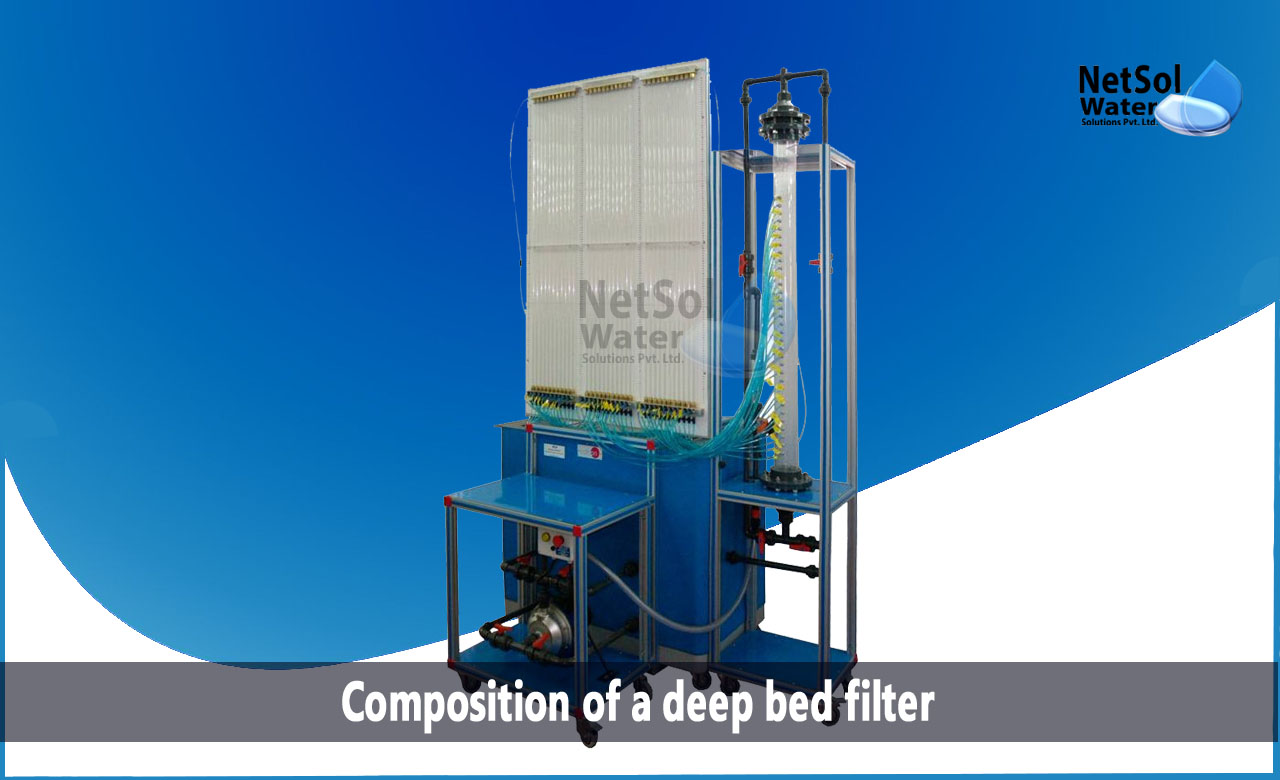The most popular granular media used in deep bed filters are garnet, also known as high density sand, anthracite, and silica sand.
Granular filter medium must include particles that are large enough to allow a sizable portion, of the suspended solids to be retained to reach two to four inches into the bed. In comparison to a round granular media of the same size, rough and angular media create greater spaces that permit more tiny particles to flow through.
What are the Composition of a deep bed filter?
Effective particle size and coefficient of homogeneity are used to specify the size of granular media. The mesh hole that allows 10% of the particles in the granular medium to pass through, by weight is the effective particle size.
The coefficient of homogeneity is obtained by dividing the effective particle size, by the opening of a mesh that would permit 60% of the particles in the granular medium, to pass by weight. The effective particle size is commonly expressed in millimetres, but the homogeneity coefficient has no physical dimensions.
The higher the uniformity in the size of the particles in the medium, the closer the uniformity coefficient is to the unit.
The optimal range of suspended solids size for a granular media depends on both the quality standards, for the filter effluent and the size properties of the suspended particles to be retained.
Multi-media filters
It is feasible to create two or three granular media in order to extend the operating period, of a filter bed made of a single granular medium. The larger particles in the top one create the upper one, and the smaller particles are created in the lower one. Because, only the larger suspended materials are retained in the upper layer, it does not saturate as quickly.
These are called as the Multi-bed or multi-media beds. The medium placed in the upper section should have the lowest particle density, while the medium placed in the bottom part should have the maximum particle density. This ensures that after backwashing, every layer is still in its proper position. Each layer's coefficient of homogeneity in these filters should be as small as possible.
Composition of a deep bed filter
|
Granular medium |
Particle size |
Uniformity Coefficient |
Specific gravity |
Acid Solubility |
|
Anthracite |
0.6 – 1.6 mm |
<1.7 |
>1.4 |
<5% |
|
Silica sand |
0.35 – 0.65 mm |
<1.7 |
>2.5 |
<5% |
|
Garnet |
0.18 – 0.60 mm |
<2.2 |
>3.8 |
<5% |
Nozzles and granular support media (diffusers, baskets, manifolds or distributors)
In a filter, the diffusers support the filter media, gather and route water out of the filter, and distribute water (and, in rare instances, air) for backwashing.
Systems for distributing water previously consisted of a configuration of pipes, with drill holes. Previously, the diameter of these holes was 14 and 12". The gravel layer in which the perforated pipe was submerged had to have smaller particles, which were at least twice the size of the perforations.
Manufacturer of water purification equipment’s
A wide range of industrial and commercial water filtration and water purification equipment’s’ are available from Netsol Water, and they may be customised to meet the demands and requirements of any particular project. In addition, we provide top-notch RO plants, water softeners and activated carbon filters that can be used for any tertiary water treatment, or water purification application.
Netsol Water is Greater Noida-based leading water & wastewater treatment plant manufacturer. We are industry's most demanding company based on client review and work quality. We are known as best commercial RO plant manufacturers, industrial RO plant manufacturer, sewage treatment plant manufacturer, Water Softener Plant Manufacturers and effluent treatment plant manufacturers. Apart from this 24x7 customer support is our USP. Call on +91-9650608473, or write us at enquiry@netsolwater.com for any support, inquiry or product-purchase related query.



